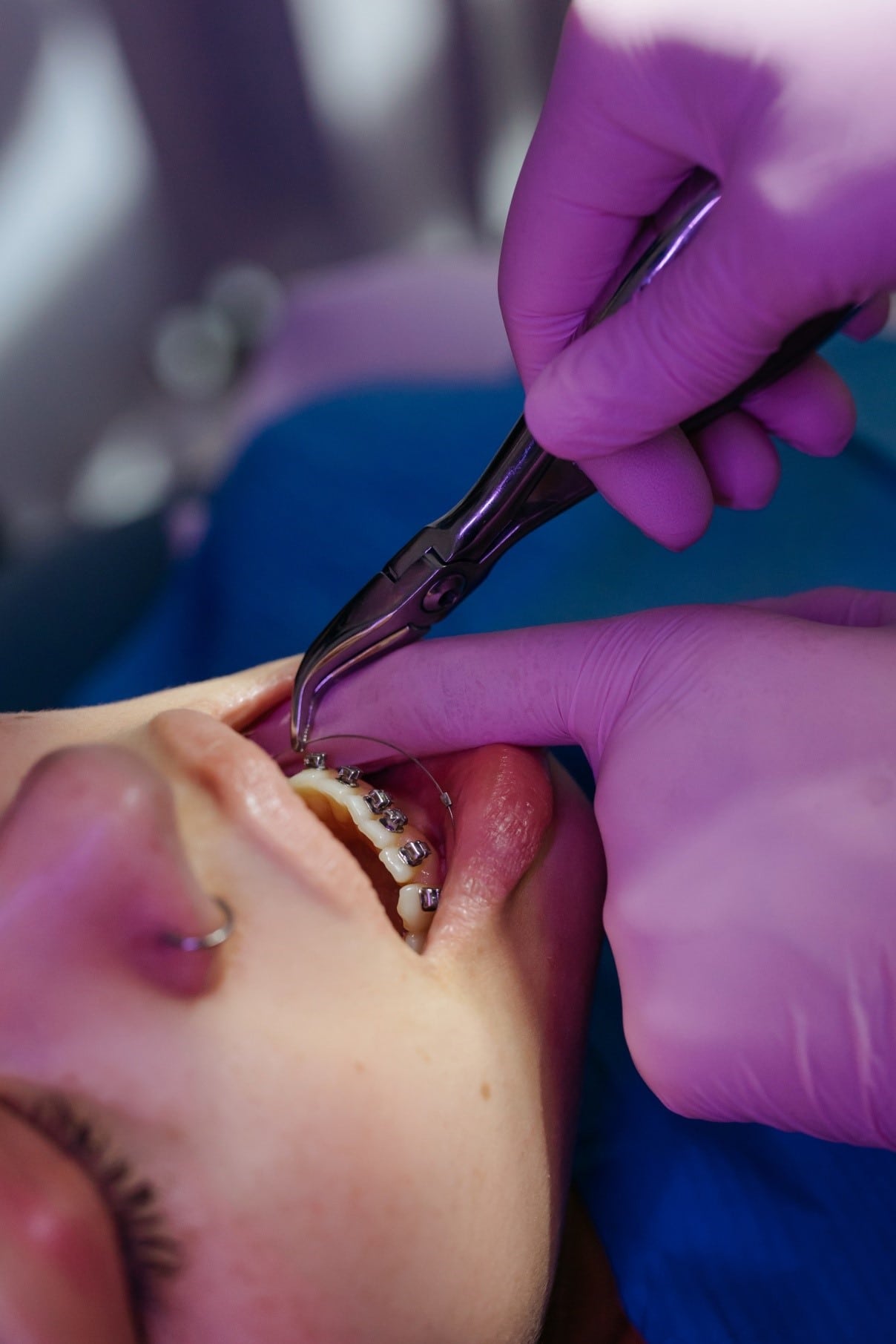After the initial installation of your braces, your orthodontist will provide you with guidelines on what you can and can’t do. This will also include what you can and cannot eat. During your follow-up appointments to tighten your braces, the orthodontist will review these guidelines and you can clarify any confusion you have at these appointments.
Many individuals who require braces are curious to know how long they will be using braces (Moresca R., 2018). This is one of the questions patients ask the most and rightly so because there are many things to bear in mind while wearing braces.
What can you not eat with braces?
For example, many individuals have never considered the importance of what they eat before braces and may be surprised when they realize they have to think a little bit more about their food before they bite. You need to think about what not to eat with braces, what to eat with braces, how to eat with braces, or how tightening braces will affect what you can enjoy at the table.
Orthodontists play a major role in orthodontic treatment time (Moresca R., 2018), and good orthodontists will educate their patients appropriately as part of a high standard of care.
That means your orthodontist will provide you with information regarding how braces are tightened and how they function. It is important to know how braces tighten and how this will affect your diet. So what should you not eat with braces and what should you eat with braces after you get your braces tightened?
How are braces tightened?
First, let’s do a little defining of terms. “Tightening” is kind of a misnomer when it comes to your orthodontic care. It really involves your orthodontist removing the old elastics and old archwire, then putting in a new archwire. Some tension will be applied to the wire as your orthodontist installs it, and any excess wire out the back of the brackets on your molars gets snipped off. The new elastics are then affixed and you are all done!
Braces tightening
The first thing especially for individuals who are not familiar with the process may be wondering is why do braces tightening affects what I can eat? The fact of the matter is that tightening braces is an important part of making sure that proper tension is kept on them. Braces are designed to help pull the teeth into the correct position to alleviate any number of orthodontic issues that may be affecting you. Pulling these teeth into new positions means that they will be shifting in the jaw. You are literally shifting a part of the skeletal system around to either fix an issue or prevent one. However, this shifting does put a strain on the teeth and jaw which can be uncomfortable for any individual.
Braces tighten
Once they have been moved a little bit, the tension will be lessened and your braces will need to be re-tightened to continue to be effective; otherwise, the teeth will only move as far as the initial tension was on your braces. Why don’t they just tighten it to where the correct positions will be? That would be because your orthodontist doesn’t want to shatter your teeth or break your jaw. This is a process that is done slowly and finished over time. It is not something that is forced and we can all be thankful for that.
Braces adjustment
There are a couple of reasons why your diet may be limited now that you have braces, especially after your braces get tightened. One of the reasons why your diet will be limited is because your new braces will impact your ability to bite and chew certain foods. Because you have an orthodontic apparatus on your teeth, it will impact the bite surfaces. Although braces are great at pulling teeth into their correct position and making you have a beautiful smile, they are not great at grinding, tearing, or chewing through tough or fibrous foods due to their blunt nature.
Getting braces tightened
Also with your teeth being shifted, they are not as firmly attached to the jaw as they used to be and many individuals report that their teeth feel loose. This is another good reason to make sure that you go easy on them, especially right after they have been tightened, as this is when most people refer to the loose sensation.
But what can I eat after my braces get tightened?
The good news is you can actually eat many things. There are many foods to eat with braces out there that will allow you to eat full and hearty meals without fear or concern of damaging your braces or making your teeth feel achy or uncomfortable. It’ll come as no surprise that many of these foods are soft or liquid and put very little strain on the teeth.
Some of these foods can include things like oatmeal, breakfast cereals, eggs, soft bread, and even soft meats like ground sausage or kielbasa. These can be great options for a breakfast meal and there is no limit to the number of juices that you could or should drink with braces as juices do not impact the work that your braces are performing. Just make sure you rinse afterward so the acid from the juice does not erode your enamel.
Foods to eat with braces
What about other meals of the day? The rule is basically this if it is fairly soft to eat and does not require a deep bite, it is likely something you are allowed to have. This means foods like soups, rice, noodles, yogurt, mashed potatoes, smoothies, bananas, milkshakes, cake, tortillas, and a whole host of other foods are readily available for you to eat and enjoy.
What to eat with braces
For instance, a great braces-approved dinner might be having steamed Chinese dumplings with soup or you could also have a very tenderized thin steak with your mashed potatoes and gravy. However, there are many foods that do need to be avoided and so finding ways of being able to enjoy foods that you love while avoiding their harmful versions is important.
What not to eat with braces
Any foods that require a deep bite like carrots or apples should absolutely be avoided as this will put strain on the braces to push and power through the hard and fibrous material of these vegetables. Anytime you can eat a food while avoiding strain on your braces is something you should attempt to do. This means gummy foods are out, like toffee, gummy bears, gummy worms, or anything sticky that may also cling to your braces.
How to eat with braces
Hard foods like nuts, granola, ice cubes, popcorn, chips, and tough meats like a firm steak or tough jerky should also all be avoided at all costs as this additional strain, especially after getting braces tightened, will make your teeth ache painfully. A simple rule is if you’re going to be chewing and the food will come in contact with your braces, make sure it is not something that will push, pull, tug, stick, or strain against the braces.
Tightening braces
Soft foods are most preferred as they will cause the least amount of stress and strain and ultimately the least amount of pain to you, especially after braces have been tightened. So protect your braces, protect your smile, and follow your orthodontic office’s guidelines for what to eat and when, and you can get the smile you desire with as little discomfort as possible.
Many people desire a shorter period of wearing braces (Moresca R., 2018), and following the guidelines is a great way to ensure that you don’t lengthen the process unnecessarily.
Reference:
Moresca R. (2018). Orthodontic treatment time: can it be shortened?. Dental press journal of orthodontics, 23(6), 90–105. https://doi.org/10.1590/2177-6709.23.6.090-105.sar
Contact us:
IVANOV Orthodontics, 12866 Biscayne Blvd, North Miami, FL 33181
https://www.google.com/maps?cid=154326063970645489
Call us at (786) 540-1919 to schedule a free orthodontic exam.



